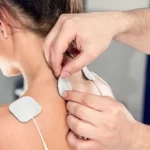Why tracking your heart rate variability may be the most important health habit of the next decade
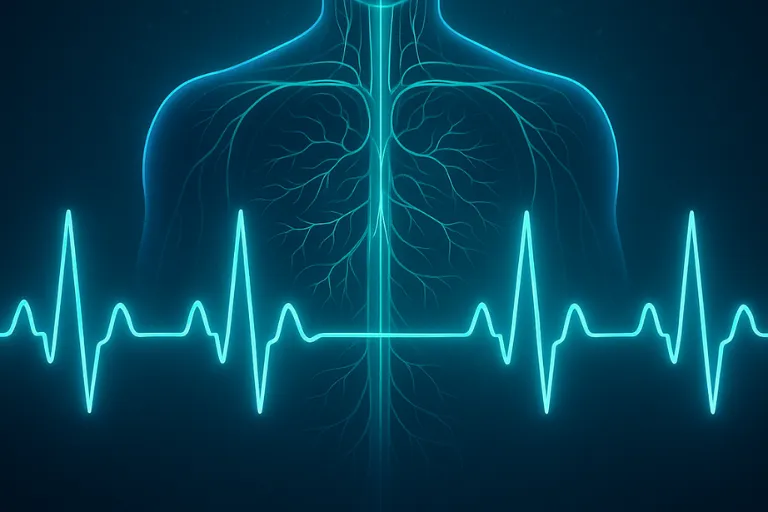
But what does HRV actually represent? And why does heart rhythm shift in response to stress and recovery?
The answer lies in the autonomic nervous system.
Heart Rate Variability (HRV) reflects the balance between the sympathetic (‘fight or flight’) branch and the parasympathetic (‘rest and digest’) branch.
When stress predominates, HRV decreases. When recovery mechanisms engage, HRV increases. This is why researchers consider HRV a non-invasive marker of nervous system health.
Why Your Stress Score Matters More Than You Think
You already track your steps. Maybe your sleep. Some people even log calories or blood sugar.
But there’s one metric that quietly predicts your ability to handle stress, recover, and stay healthy: Heart Rate Variability (HRV).
HRV measures the tiny variations in time between each heartbeat. The higher your HRV, the more flexible and resilient your body is. A low HRV, on the other hand, means your system is stuck in “high idle”—your stress response never really turns off.
In plain terms:
- High HRV → Your body can smoothly shift between stress and recovery.
- Low HRV → Your body stays on alert, even when you’re trying to rest.
Dozens of studies link higher HRV to better sleep, stronger immunity, sharper focus, and even longer lifespan. That’s why athletes, health professionals, and now everyday health-conscious consumers are calling it the “new stress score.”
But here’s the problem: most people can’t get their HRV to budge.
Why HRV Gets Stuck
You’ve probably tried the usual suspects: going to bed earlier, cutting caffeine, meditating, or adjusting workouts. And yet, the HRV graph on your wearable barely moves.
That’s because HRV isn’t just about lifestyle tweaks. At its core, HRV reflects the health of one system: the vagus nerve.
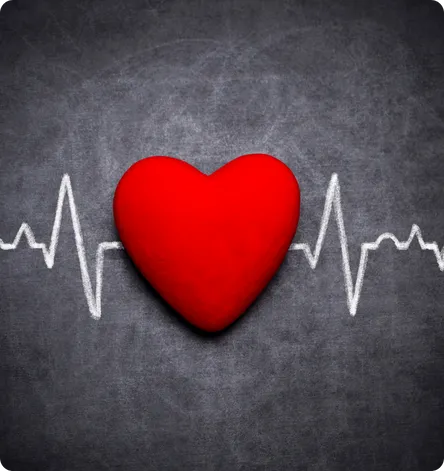
HRV: More Than a Number — A Window Into Nervous System Health
HRV isn’t just a wearable gimmick. It’s one of the most powerful non-invasive indicators of your autonomic nervous system — the balance between “fight or flight” (sympathetic) and “rest and digest” (parasympathetic).
- A high HRV signals adaptability: your system can switch smoothly between activity and recovery.
- A low HRV reveals that your stress response is dominating, keeping your body locked in alert mode even when you want to rest.
While wearable devices now make HRV easy to track, it’s important to remember that this measurement can fluctuate daily and is influenced by factors such as hydration, sleep, and even meal timing. A single low reading doesn’t necessarily mean poor health; consistent patterns matter more.
What the Science Shows
Decades of research show that:
- Reduced HRV is linked to chronic disease. Heart failure,depressive states, anxious thoughts, and stress disorders all show suppressed HRV.
- Parasympathetic withdrawal and sympathetic overactivity are the common patterns behind low HRV.
- Improving HRV is possible. Evidence-based interventions — like aerobic exercise, slow-breathing biofeedback, and vagus nerve stimulation — reliably increase HRV.
Why Vagus Nerve Stimulation Is Being Studied
Among the various interventions shown to influence HRV — including aerobic activity, slow-breathing biofeedback, and meditation — researchers have also examined the role of transcutaneous vagus nerve stimulation (tVNS).
In scientific investigations, low-level tVNS applied at the ear has been associated with:
- Improvements in cardiac autonomic function
- Modulation of inflammatory cytokine activity
- Reported improvements in the quality of life among individuals with autonomic imbalance
While the field is still developing, these findings suggest that vagus nerve stimulation may represent a promising adjunct for supporting autonomic balance and, by extension, HRV.
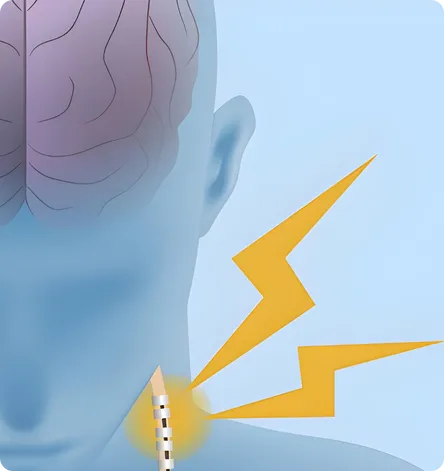
Meet the Vagus Nerve: Your Body’s Central Regulator
The vagus nerve is the main parasympathetic pathway of the autonomic nervous system. It connects the brainstem to the heart, lungs, gastrointestinal tract, and other organs, transmitting signals that help maintain internal stability.
When vagal activity is strong, the body can shift smoothly into recovery mode: heart rate slows, breathing becomes deeper, digestion proceeds normally, and inflammatory processes are moderated.
When vagal activity is weakened, sympathetic signals dominate. The result is persistent physiological arousal — elevated heart rate, shallow breathing, disrupted digestion, and heightened inflammatory tone.
This is where the link to HRV becomes clear:
- HRV is a measurable reflection of vagal activity.
- Higher HRV indicates strong vagal regulation and the ability to transition flexibly between stress and recovery.
- Lower HRV suggests reduced vagal tone, leaving the system “stuck” in stress dominance.
This connection is why researchers increasingly view HRV as not just a marker of cardiovascular health, but also as a non-invasive indicator of vagus nerve function.
Why Modern Life Weakens the Vagus Nerve
Chronic stress, insufficient sleep, late-night screen exposure, overtraining, and lingering inflammation after illness can all diminish vagus nerve signaling.
The result is familiar to many:
- HRV remains stubbornly low
- Recovery feels incomplete
- Stress-related symptoms accumulate — anxious thoughts, brain fog, digestive discomfort, fatigue
It’s not that lifestyle habits don’t matter. It’s that, without a strong vagal signal, the body never fully receives the message to “downshift” into recovery.

Can You Actively Strengthen the Vagus Nerve?
The idea of “training” the vagus nerve is not new. People have experimented with methods such as:
- Breathing exercises (slow, paced breathing can transiently enhance vagal activity)
- Meditation and mindfulness (shown in studies to increase HRV in some individuals)
- Cold-water immersion or exposure (may briefly trigger vagal responses)
These techniques are valuable, but their effects are often inconsistent and short-lived, depending heavily on practice quality and individual response.
Why Direct Vagus Nerve Stimulation Is Being Studied
Researchers have investigated a more targeted approach: vagus nerve stimulation (VNS).
- Surgical VNS has been used in clinical medicine for decades, but it involves invasive implantation.
- More recently, non-invasive transcutaneous VNS (tVNS) — applied at the ear — has emerged as a way to stimulate vagal pathways safely and reproducibly.
This method avoids the risks of do-it-yourself techniques that target areas near the neck or chest, where important arteries and cardiac regulation centers are located. Instead, auricular tVNS focuses on the ear branch of the vagus nerve, which is both accessible and well tolerated.
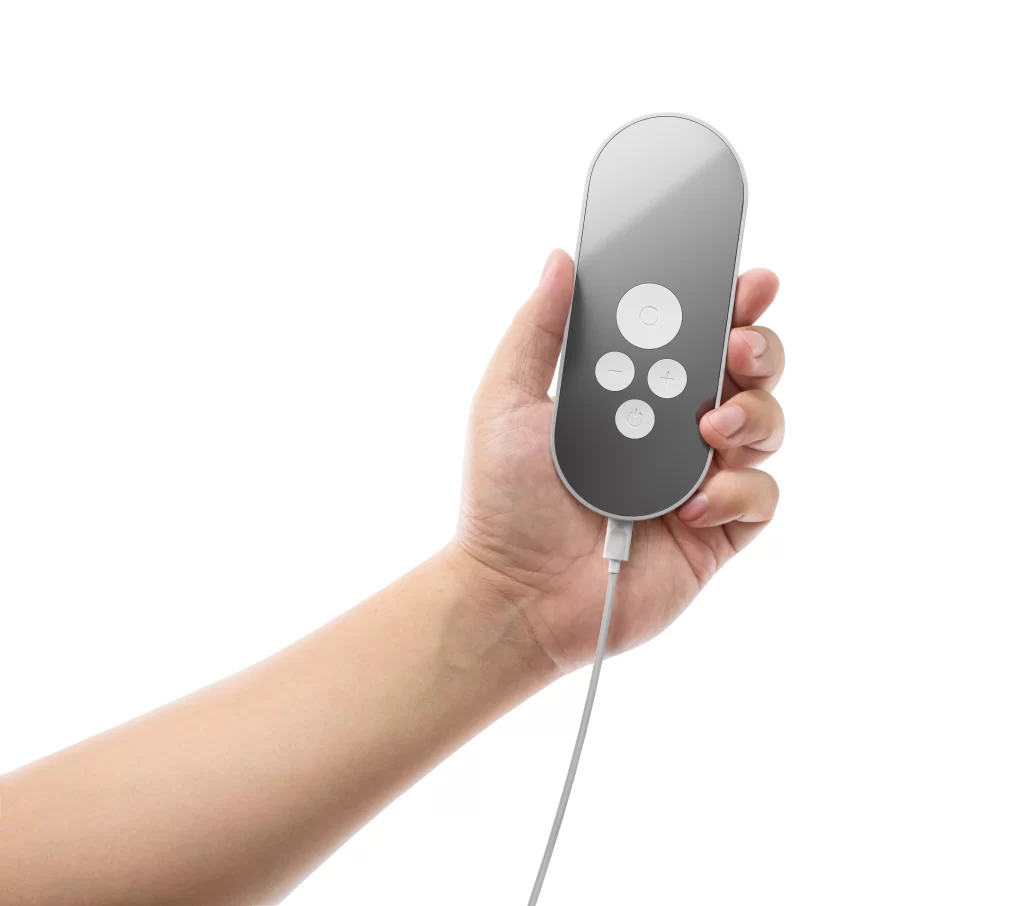
An Evidence-Based Option for Daily Use
Among available tVNS approaches, devices developed for clinical and home settings are beginning to bridge the gap between research and everyday application.
Nurosym™ is one such CE-marked device, designed to deliver precise, low-level stimulation to the auricular vagus nerve through a comfortable ear clip.
- During use (30–60 minutes): most users describe a mild tingling and a sense of calm.
- After weeks of regular use: HRV measurements often appear more flexible, with sleep and daily energy reported as more stable.
- Over the long term: consistent stimulation may help strengthen vagal tone and improve resilience to stress.
Unlike reminders to breathe or apps that suggest relaxation techniques, Nurosym directly engages the neural pathway that regulates recovery.
Backed by Science, Trusted by Clinicians
Nurosym is not a gadget — it’s a device developed with leading research institutions.
- Tested in 50+ scientific studies on symptoms linked to autonomic imbalance (fatigue, anxious thoughts, sleep problems, chronic pain)
- Non-invasive & FDA-designated non-significant-risk
- Recommended by health professionals and used in clinics worldwide
In studies, users reported significant improvements in fatigue, mood, and HRV after consistent use.
For a fraction of the cost of implantable vagus nerve stimulators (which can exceed $10,000), Nurosym offers a safe, at-home way to engage the same pathway — without medication or surgery.
How to Use It (Zero Friction)
- Clip the electrode onto your ear (tragus).
- Press start. Adjust intensity until you feel a light, soothing tingle.
- Carry on. Read, plan your day, or watch TV while Nurosym does its work.
- Repeat daily. Most users begin with one 30-minute session; some add a second in the evening.
No gels. No complicated routines. Just plug in, press start, and get on with your day.
What People Notice
- Calmer baseline: a sense of quiet during and after use
- Deeper sleep: nights feel more restorative, mornings less like a wall
- Steadier energy: fewer spikes and crashes across the day
- Better workouts & recovery: training feels smoother, not heavier
- More resilience: daily stressors feel less overwhelming
Why HRV Is the Proof
Unlike subjective wellness habits, HRV gives you data. With Nurosym, you don’t have to guess whether your nervous system is improving — your wearable can show you.
That’s why health optimizers, athletes, and clinicians are calling Nurosym the first measurable wellness device.
- Sleep trackers show hours, not quality.
- Step counters measure motion, not recovery.
- But HRV reveals how well your system adapts — the foundation of resilience.
When your HRV starts trending upward, it’s proof that your vagus nerve — and your recovery capacity — are stronger.

Safety and Trust
- Scientifically validated: over 50 studies on vagus nerve stimulation.
- Medical-grade certification: FDA-designated safe.
- Millions of safe sessions delivered worldwide with no serious adverse events.
- Health professionals recommended: more than 1,000 health professionals endorse Nurosym.
And every device comes with a 30-day money-back guarantee. If you don’t notice improvements, you return it — no questions asked.
Imagine the Difference
Picture your day with a stronger vagus nerve and higher HRV:
- You wake without bargaining with the alarm.
- Coffee is a choice, not a crutch.
- Meetings don’t spike your pulse.
- Afternoons feel steady instead of foggy.
- Evenings are calmer, digestion smoother, and sleep deeper.
Your wearable confirms what you feel: your stress score — HRV — is climbing.
Your Next Step
Most people don’t realise how much better they could feel — until they strengthen the system that governs stress and recovery.
Nurosym makes it possible to do that at home, safely, and measurably.
- Pick a session time. Morning or evening both work.
- Clip in, press start, carry on.
- Watch your HRV improve.
Your nervous system is too important to leave stuck in overdrive. Support it daily, and let your body recover the way it was designed to.
See how Nurosym helps restore balance to the nervous system
Designed and scientifically tested in Europe, Nurosym™ delivers gentle, non-invasive stimulation to the vagus nerve — helping the body regain calm, improve autonomic balance, and ease symptoms associated with chronic stress and nervous system dysregulation.
Thousands of users and multiple university-led studies suggest that this simple device may help the body self-regulate more effectively — supporting better sleep, steadier energy, and reduced pain sensitivity.
This blog post aims to be informational and should not replace professional health advice. Always consult with a health professional for personalised advice.
References
- Tiwari R, Kumar R, Malik S, Raj T, Kumar P. Analysis of Heart Rate Variability and Implication of Different Factors on Heart Rate Variability. Current Cardiology Reviews [Internet]. 2021 Oct 22;17(5). Available from: https://pmc.ncbi.nlm.nih.gov/articles/PMC8950456/
- Domuschiev I. Does heart rate variability (HRV) or heart rate (HR) have greater prognostic value? 2023; Available from: https://www.researchgate.net/profile/Ivan-Domuschiev/publication/374331806_Does_heart_rate_variability_HRV_or_heart_rate_HR_have_greater_prognostic_value/links/65186f8fb0df2f20a2fee074/Does-heart-rate-variability-HRV-or-heart-rate-HR-have-greater-prognostic-value.pdf?_tp=eyJjb250ZXh0Ijp7ImZpcnN0UGFnZSI6InB1YmxpY2F0aW9uIiwicGFnZSI6InB1YmxpY2F0aW9uIn19
- Capilupi MJ, Kerath SM, Becker LB. Vagus Nerve Stimulation and the Cardiovascular System. Cold Spring Harbor Perspectives in Medicine [Internet]. 2020 Feb 1;10(2):a034173. Available from: http://perspectivesinmedicine.cshlp.org/content/10/2/a034173.short
- Wang Y, Li SY, Wang D, Wu MZ, He JK, Zhang JL, et al. Transcutaneous Auricular Vagus Nerve Stimulation: From Concept to Application. Neuroscience Bulletin. 2020 Dec 23;
Share via:


